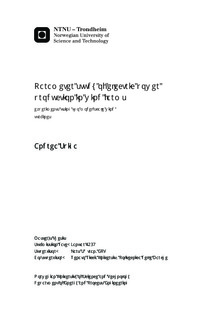Parameter study of electric power production in wind farms - experiments using two model scale wind turbines
Master thesis
Permanent lenke
http://hdl.handle.net/11250/2359306Utgivelsesdato
2015Metadata
Vis full innførselSamlinger
Sammendrag
Wind farms are widely developed even if several unsolved problems need to be faced. The rotor wakeinteraction involves different physical phenomena, not yet fully understood, directly affectingthe overall wind farm power production. Numerical models and engineering rules havealways been used to design wind farm layout but a spread between power predictions and resultsis verified. In this context wind energy research assumes a "back to basic" approach, bymeans of wind tunnel experiments, under controlled conditions, that represent the method tocalibrate and correct the theoretical simulation models.The aim of this project is to provide a useful set of wind tunnel measurements focused on thewake-rotor interaction analysis and on wind farm power output optimization. A benchmarkis obtained, arranging a two-turbine wind farm, in order to calibrate numerical models and toshow a wind farm case study.Two three-blade wind turbine models are used in the present study. Despite some small geometricaldifferences, they are both equipped with the same blade-set, based on the NREL S826airfoil, and they have a rotor diameter of D = 0.9 m.A characterization concerning power performances and wake features of both turbines is performed,in order to obtain reference values for array efficiency assessment. The used referencevelocity is set to U_ref = 11.5 m/s. Afterwards, the two models are arranged inline building atwo-turbine wind farm case. Different tests are carried out varying several parameters: theseparation distance between the models (3D, 5D and 9D), the inflow condition (low and highturbulence background level) and both turbines tip speed ratios.First turbine wake measurements reveal that the velocity deficit recovery and the radial expansionof the wake are dependent on the flow turbulence. Higher the turbulence, faster the velocityrecovery and bigger the expansion. As a consequence, high turbulence flows allow an earliertransition from near to far wake. Turbulence generation is analysed and related to the rotoroperating point.The array parametric study points out that the overall efficiency increases by moving furtherdownstreamthe second turbine, rising the background turbulence level and by choosing a suitableoperating point for each turbine. The analysis suggest to obtain the maximum wind farmefficiency by an accuratemanagement of these different parameters: a strong reliance on downstreamdistance and on turbulence level is confirmed, smaller variations are found dependingon the turbines operating point, but the relevance is still essential.
